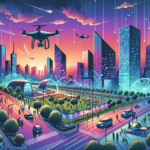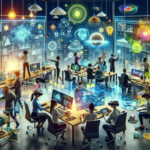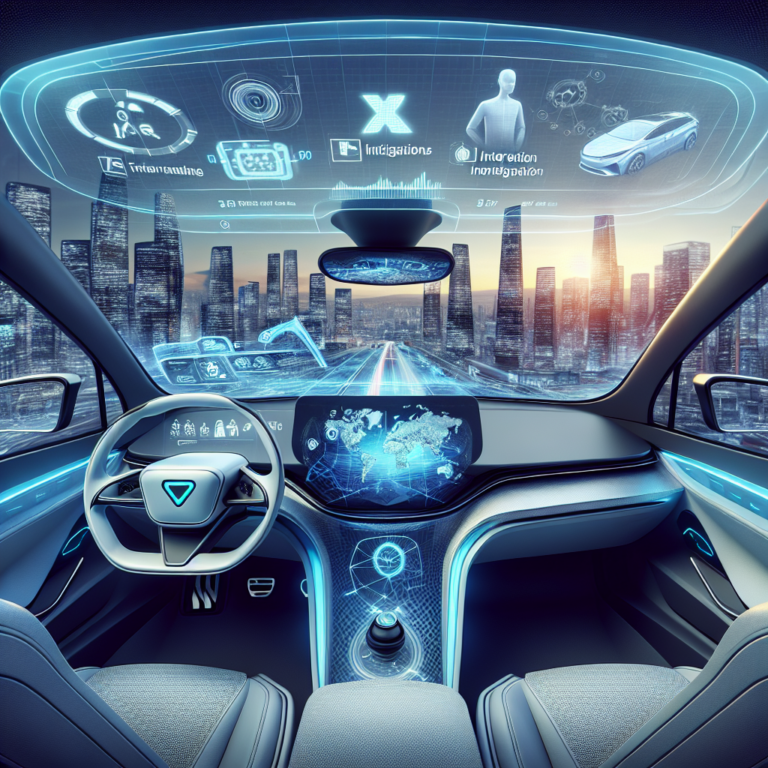Tesla XR Integration: Transforming Navigation and Entertainment in Vehicles
In the fast-paced world of automotive technology, Tesla XR Integration stands out as a groundbreaking opportunity for enhancing vehicle navigation and entertainment systems. As Extended Reality (XR) technologies gain momentum, the potential applications for Tesla vehicles become thrilling and expansive. Let’s explore the remarkable possibilities that could emerge if Tesla fully embraces XR technology.
The Exciting Potential of XR in Vehicles
XR, which includes Virtual Reality (VR), Augmented Reality (AR), and Mixed Reality (MR), has proven its versatility across various industries like manufacturing and training. For the electric vehicle (EV) market, XR could bring transformative changes to several vital areas.
Enhanced Navigation with XR
Tesla XR Integration:Imagine navigating unknown roads with an AR overlay that offers real-time directions, traffic updates, and points of interest right before your eyes. This Tesla XR Integration could vastly improve the driving experience, minimizing the necessity to look at traditional GPS screens. The result? Increased safety and convenience for every journey.
Key Features of XR Navigation:
- Real-time traffic updates and optimized routes
- AR indicators for key locations such as charging stations, restaurants, and landmarks
- Hands-free navigation enabled via voice commands or simple hand motions
Tesla XR Integration: Immersive Entertainment Through XR
The integration of XR could completely change the in-car entertainment landscape. Passengers might enjoy virtual movie screenings, engage in immersive games, or even take virtual tours of upcoming destinations. This integration can turn lengthy road trips into entertaining adventures.
Entertainment Options with XR:
- Virtual movie experiences enriched with 3D effects
- Interactive games using the car’s surroundings as a playground
- Virtual explorations of future stops to spark excitement and anticipation
How Tesla Could Effectively Implement XR
Tesla is well-known for its innovative approaches, and they have already made strides in XR technology for various applications.
Revolutionizing Design and Prototyping
In their design and testing processes, Tesla utilizes XR simulations extensively. By adapting this technology for in-vehicle applications, engineers could devise and assess XR-based navigation and entertainment systems before implementation, saving both time and resources.
Tesla XR Integration: Streamlining Remote Maintenance and Troubleshooting
XR technology can also facilitate remote maintenance and troubleshooting, allowing technicians to identify issues without physically approaching the vehicle. This capability extends to in-car systems, enabling quick resolution of any technical complications that emerge while enjoying XR features.
Integrating with Existing Systems
Tesla vehicles are already equipped with advanced Autopilot and artificial intelligence technologies. By incorporating XR, these systems could receive significant enhancements. For instance, the Autopilot system could deploy AR to give drivers visual cues about their surroundings, further improving safety during driving.
Real-World Examples and Collaborations
Innovative Collaborations
One recent partnership, between Odakyu Electric Railway and Tesla, showcased the potential of XR technology. A 3D video of Tesla models was displayed interactively, allowing viewers to engage with the Cybertruck through their smartphones. Imagine similar technology integrated into Tesla vehicles to elevate user engagement!
What Other Automotive Companies Are Doing
Automakers like Audi and General Motors have begun incorporating XR into their operations. Audi offers customers virtual test drives of their electric models, while General Motors uses XR simulations to evaluate vehicle performance and safety. Tesla could take these examples and build innovative XR features for their cars.
Challenges and Future Directions for XR Integration
While the prospect of Tesla XR Integration is thrilling, a few challenges need addressing.
Balancing Cost and Integration
The initial expense of XR devices and the intricacies of integrating them into existing vehicle systems can be considerable. As the technology advances and becomes increasingly prevalent, these costs are likely to diminish.
Prioritizing User Comfort and Safety
It’s essential to ensure that XR technology does not distract drivers or cause discomfort. Tesla must create intuitive systems that prioritize user safety and comfort. This involves thorough testing and gathering user feedback to polish the experience.
The Future of Driving Through XR:
- Immersive and engaging navigation and entertainment systems
- Enhanced safety features provided by AR overlays
- Interactive and enjoyable in-car experiences
- Ongoing innovation powered by XR technologies
With Tesla leading the charge, the future of driving will extend beyond merely reaching a destination. It will shape an immersive, interactive, and safe journey, elevating the overall automotive experience. 🚗✨




0 Comments